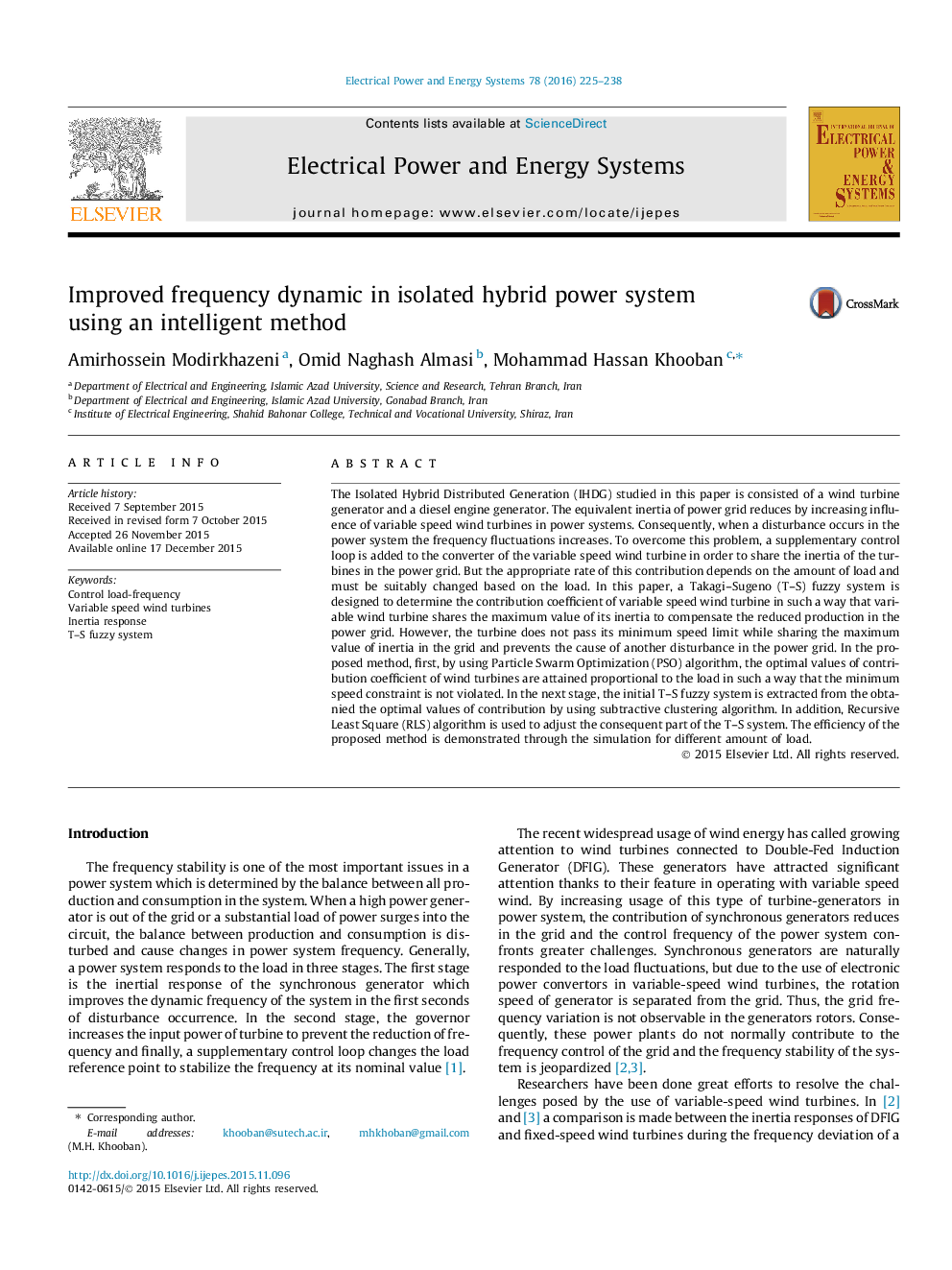| Article ID | Journal | Published Year | Pages | File Type |
|---|---|---|---|---|
| 398426 | International Journal of Electrical Power & Energy Systems | 2016 | 14 Pages |
•This paper introduces an optimal robust controller for isolated hybrid power system.•The proposed framework is simple and does not have complexities.•The proposed controller guaranties stability and robustness.•A T–S fuzzy system is designed to determine the contribution coefficient of variable speed WT.
The Isolated Hybrid Distributed Generation (IHDG) studied in this paper is consisted of a wind turbine generator and a diesel engine generator. The equivalent inertia of power grid reduces by increasing influence of variable speed wind turbines in power systems. Consequently, when a disturbance occurs in the power system the frequency fluctuations increases. To overcome this problem, a supplementary control loop is added to the converter of the variable speed wind turbine in order to share the inertia of the turbines in the power grid. But the appropriate rate of this contribution depends on the amount of load and must be suitably changed based on the load. In this paper, a Takagi–Sugeno (T–S) fuzzy system is designed to determine the contribution coefficient of variable speed wind turbine in such a way that variable wind turbine shares the maximum value of its inertia to compensate the reduced production in the power grid. However, the turbine does not pass its minimum speed limit while sharing the maximum value of inertia in the grid and prevents the cause of another disturbance in the power grid. In the proposed method, first, by using Particle Swarm Optimization (PSO) algorithm, the optimal values of contribution coefficient of wind turbines are attained proportional to the load in such a way that the minimum speed constraint is not violated. In the next stage, the initial T–S fuzzy system is extracted from the obtanied the optimal values of contribution by using subtractive clustering algorithm. In addition, Recursive Least Square (RLS) algorithm is used to adjust the consequent part of the T–S system. The efficiency of the proposed method is demonstrated through the simulation for different amount of load.
